Search the Special Collections and Archives Portal
Search Results
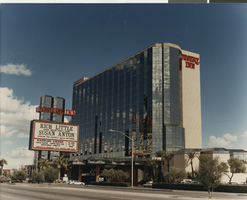
Photograph of the front exterior of the Desert Inn Hotel and Casino (Las Vegas), circa 1988
Date
Archival Collection
Description
The tower of the Desert Inn. Transcribed from photo sleeve: "Was renovated in 1978."
Site Name: Desert Inn
Address: 3045 Las Vegas Boulevard South
Image
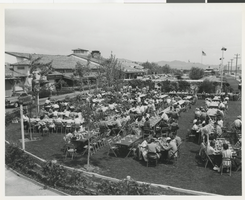
Photograph of an outdoor social event at the Hotel Last Frontier, 1940s
Date
Archival Collection
Description
Event on the grounds in front of the Hotel Last Frontier. Stamped on original: "Las Vegas News Bureau. 2376. Convention Center. Las Vegas, NV 89109"
Site Name: Frontier
Address: 3120 Las Vegas Boulevard South
Image
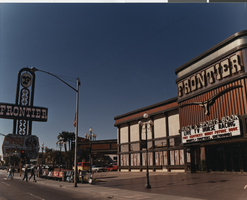
Photograph of the front exterior of the Frontier Hotel, 1987
Date
Archival Collection
Description
Front exterior of the Frontier Hotel in 1987, showing exterior entrance to the Race & Sports Book. Marquee on the left advertises Siegfried & Roy in "Beyond Belief."
Site Name: Frontier
Address: 3120 Las Vegas Boulevard South
Image
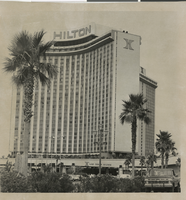
Photograph of the front exterior of the Las Vegas Hilton, circa 1971-1974
Date
Archival Collection
Description
Las Vegas Hilton before expansions made in 1975. The International Hotel was sold in 1970 and renamed the Las Vegas Hilton in 1971.
Site Name: International Hotel
Address: 3000 Paradise Road
Image
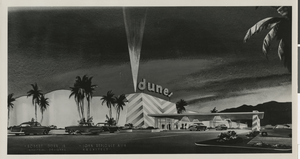
Photograph of an artist's rendering of the Dunes Hotel (Las Vegas), before 1955
Date
Archival Collection
Description
Artist's rendering of the Art Deco style front entrance and porte-cochère of the Dunes.
Site Name: Dunes Hotel
Address: 3650 Las Vegas Boulevard South, Las Vegas, NV
Image
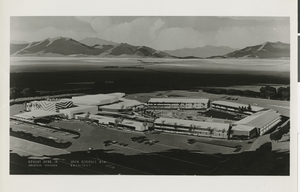
Photograph of an artist's rendering of the Dunes Hotel complex (Las Vegas), before 1955
Date
Archival Collection
Description
Artist's conception of the Dunes Hotel complex.
Site Name: Dunes Hotel
Address: 3650 Las Vegas Boulevard South, Las Vegas, NV
Image
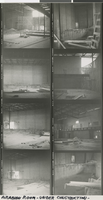
Proof sheet of photographs of the Dunes Arabian Room under construction (Las Vegas), 1955
Date
Archival Collection
Description
Proof sheet including eight photos showing the Dunes Arabian Room while it was under construction.
Site Name: Dunes Hotel
Address: 3650 Las Vegas Boulevard South, Las Vegas, NV
Image

Photograph of an artist's rendering of the Dunes Hotel sign (Las Vegas), circa 1955
Date
Archival Collection
Description
Artist's concept of the Dunes Hotel sign. Stamped on original: "Frank and Virginia Ball Studio - 222 South 2nd Street - Las Vegas, Nevada."
Site Name: Dunes Hotel
Address: 3650 Las Vegas Boulevard South, Las Vegas, NV
Image
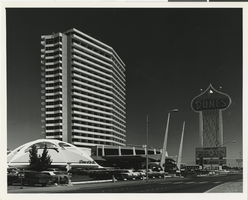
Photograph of the Dunes Hotel exterior (Las Vegas), circa 1970s
Date
Archival Collection
Description
The Dunes Hotel from the Strip showing the Diamond of the Dunes tower addition. Stamped on original: "Las Vegas News Bureau. Convention Center. Las Vegas, Nevada, 29572, Don English, Tony King, Gary Angell, Jerry Abbott, John Litty, Milt Palmer, Wolf Wergin, Lee McDonald, Cliff Stanley."
Site Name: Dunes Hotel
Address: 3650 Las Vegas Boulevard South, Las Vegas, NV
Image

Aerial photograph of the Dunes Hotel (Las Vegas), circa 1960s
Date
Archival Collection
Description
The Dunes Hotel and golf course from the air in the 1960s. Print version was created from negative film-- the image on the photograph is reversed.
Site Name: Dunes Hotel
Address: 3650 Las Vegas Boulevard South, Las Vegas, NV
Image
